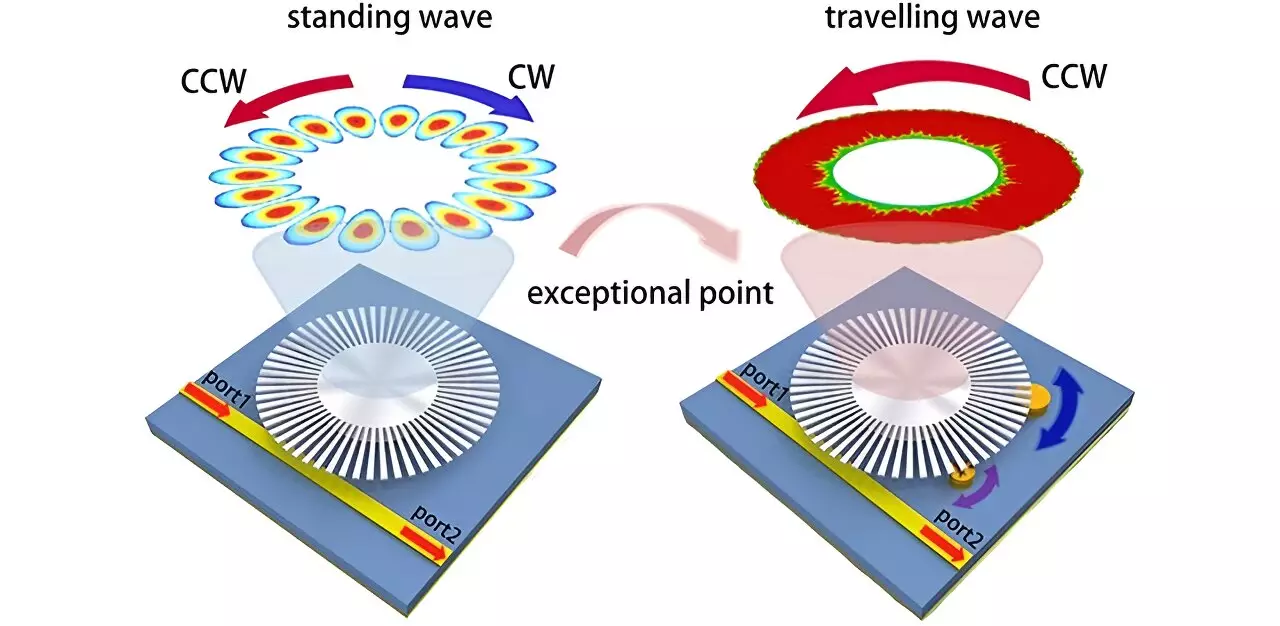In the evolving landscape of sensor technology, the intersection of photonics and materials science has sparked groundbreaking innovations. Recent research has been particularly focused on non-Hermitian physics, a branch of physics that provides novel methodologies for light manipulation, ultimately enhancing the sensitivity of sensors. A promising study featured in the journal *Advanced Photonics Nexus* elucidates a cutting-edge sensor architecture that utilizes exceptional points (EPs) to significantly amplify measurement sensitivity.
Exceptional points are intriguing phenomena in quantum mechanics where eigenvalues and corresponding eigenvectors converge, leading to a drastic enhancement in sensitivity for detecting variations in light. Traditional sensors, such as those based on whispering gallery modes (WGM) like microtoroids, have capitalized on this principle, exhibiting remarkable sensitivity compared to their conventional counterparts. Nevertheless, these traditional sensors are constrained by their fixed EPs post-manufacturing, creating challenges for precise and adaptable sensing applications. This rigidity, coupled with limited frequency ranges, hinders their capacity to detect minute particles effectively, which is a key limitation in advanced sensing tasks.
The recent innovation introduces a distinctive sensor design that employs a single spoof localized surface plasmon (LSP) resonator, overcoming many limitations of traditional EP-based sensors. The architecture is ingeniously suspended above a microstrip line and features two movable Rayleigh scatterers. This arrangement not only enhances the ability to dynamically alter EP states but also operates over a broad frequency spectrum, thereby increasing sensitivity and operational scope.
The introduction of spoof LSP resonators allows the sensor to simulate localized surface plasmon behavior, granting it pivotal flexibility. Such flexibility is essential for adapting to varying environmental conditions and facilitating high sensitivity to diminutive particles, thereby expanding the practical applications of these sensors.
The newly designed sensor boasts several critical features that enhance its performance:
1. **Reconfigurability**: The adjustable Rayleigh scatterers enable the formation and reconfiguration of EPs on-the-fly, granting the sensor improved precision and versatility.
2. **Increased Sensitivity**: By confining electromagnetic fields to the surface of the resonator, the sensor significantly amplifies its responsiveness to perturbations caused by surrounding particles.
3. **Multipolar Mode Excitation**: The design supports a variety of plasmonic resonance modes, thus broadening the sensor’s operational bandwidth and expanding its detection capabilities.
This advancement in sensor technology represents a substantial leap forward, enabling detection of particles as minuscule as one-thousandth of the wavelength of light. Such unprecedented sensitivity opens up a vista of opportunities across various fields, including scientific research, environmental monitoring, and industrial applications.
The integration of non-Hermitian physics and advanced photonics through the development of innovative sensors signifies a transformative step in sensor technology. This approach promises not only to refine the capabilities of optical sensors but also to enable new avenues for research and practical application, heralding a new era of finely tuned detection methods that could reshape how we interact with the microscopic world around us. As researchers continue to explore the frontiers of this exciting field, the potential for further technological advancements remains vast.


Leave a Reply